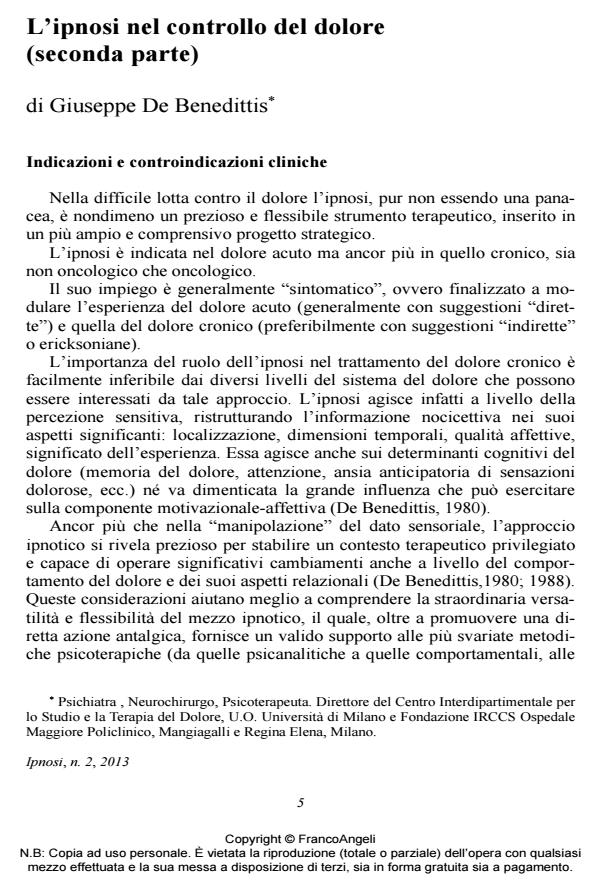L’ipnosi nel controllo del dolore (seconda parte)
Titolo Rivista IPNOSI
Autori/Curatori Giuseppe De Benedettis
Anno di pubblicazione 2013 Fascicolo 2013/2
Lingua Italiano Numero pagine 16 P. 5-20 Dimensione file 317 KB
DOI 10.3280/IPN2013-008001
Il DOI è il codice a barre della proprietà intellettuale: per saperne di più
clicca qui
Qui sotto puoi vedere in anteprima la prima pagina di questo articolo.
Se questo articolo ti interessa, lo puoi acquistare (e scaricare in formato pdf) seguendo le facili indicazioni per acquistare il download credit. Acquista Download Credits per scaricare questo Articolo in formato PDF

FrancoAngeli è membro della Publishers International Linking Association, Inc (PILA)associazione indipendente e non profit per facilitare (attraverso i servizi tecnologici implementati da CrossRef.org) l’accesso degli studiosi ai contenuti digitali nelle pubblicazioni professionali e scientifiche
In the last years there was a growing evidence, documented by numerous tested studies and meta-analysis, of the hypnotic analgesia. The principal clinic application areas of hypnosis concern: a) for example, postoperating pain, "procedural" pain, dental pain, obstetric pain, great burns pain), b) chronic pain, no-oncologic pain (for example chronic primary cephalalgia, orofacial ache, neuropathic pain, fibromyalgia), c) oncologic pain. Hypnotic techniques proposed to control the chronic pain are numerous. They are mostly connected to operator creativity, to the quality of the established relationship doctor-patient and to pain characteristics. In fact there are techniques that interpret better the space dimensions of the symptom, others the affective qualities, others more the temporal modules. The introduction of indirect methods (ericksonian) and more sophisticated ones has significatively improved the therapeutic outcomes. Hypnosis, therefore, even if it isn’t a panacea, represents a versatile and precious therapeutic tool for the patient with chronic oncologic pain, capable not only to restructure the pain system, alleviating sufferings, but also acting in a wider therapeutic context, to offer an effective help to the patient’s complex problems.
Parole chiave:Ipnosi, analgesia ipnotica, tecniche, studi clinici.
- L'uso dell'ipnosi in oncologia: le indicazioni provenienti dalla ricerca Maria Carmela C. Rivelli, Federica Volpi, in IPNOSI 1/2016 pp.15
DOI: 10.3280/IPN2016-001002
Giuseppe De Benedettis, L’ipnosi nel controllo del dolore (seconda parte) in "IPNOSI" 2/2013, pp 5-20, DOI: 10.3280/IPN2013-008001